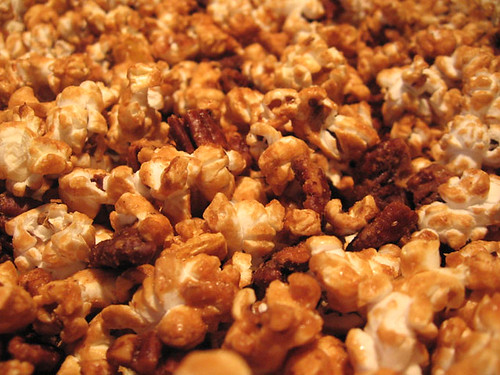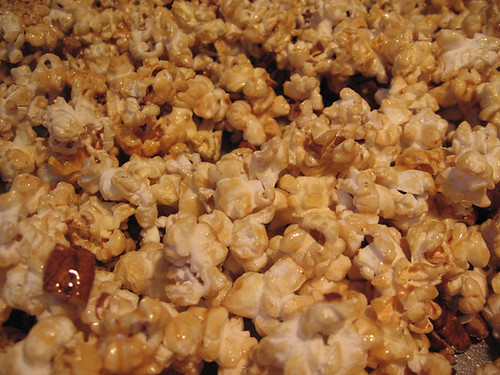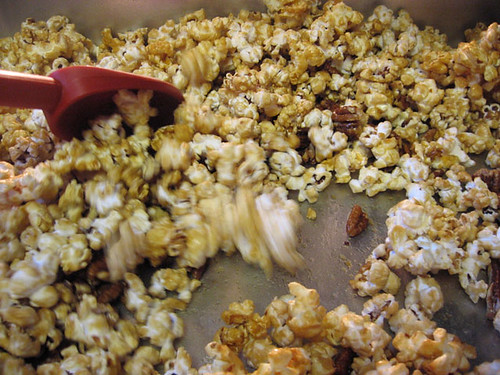Factors/Ingredients
MILKS – the basis of most frozen desserts, vegan and conventional.
cow milk is the conventional base of most ice creams and produces a consistent product. It is widely available, inexpensive and comes in a variety of forms: heavy cream, ½ + ½ , whole, 2%, 1% and skim (nonfat). A number of yogurts are also widely available to the average consumer, including plain, flavored and Greek-style. Not acceptable for vegans or the lactose intolerant.
goat, sheep and waterbuffalo milks are available in limited varieties in many natural food stores and large supermarkets. The smaller selection of grades is largely irrelevant to ice cream production, as whole milk provides adequate fat for most recipes. Yogurts produced from these milks also make frozen yogurt a possibility. Not acceptable for vegans. Goat milk is acceptable for some lactose intolerant.
soy milk and soy creamer can be effectively combined to take the place of animal milk in many recipe conversions. While a “plain” flavor creamer is available, all are as yet sweetened, a factor that can be compensated for by reducing added sugar in converted recipes. The stabilizers in both soy milk and soy creamer mimic the thickness of animal milk well and produce a smooth mouth feel when churned correctly. Acceptable for vegans and the lactose intolerant.
almond, hemp, oat, and rice milks can be used in addition to other, higher fat milks to produce a smooth, rich ice cream. The combination is essential, as their individual qualities are generally thin. These milks generally have distinct flavors that can be used well to enhance the flavors of the complete recipe. Acceptable for vegans and the lactose intolerant.
coconut milk is usable in ice cream both on its own and in combination with other milks, dairy or non-dairy that have low fat content. To utilize the coconut fat best, refrigerate the milk in its can overnight. Skim the thick white milk from the top and use in ice cream batter; put the clear coconut water to other use. Coconut milk has a distinct flavor which works well on its own and in concert with other flavors in recipes. Acceptable for vegans and the lactose intolerant.
EMULSIFIERS – contribute to the richness and smoothness of ice cream products. Overuse of any emulsifier can result in an uncomfortable inhibition of melting in ice cream products.
eggs are a v basic emulsifier used in traditional European ice cream recipes. Yolks not only being batters together, but also contribute to richness and smoothness with their high fat content. Egg whites are sometimes used in gelatos and cooked ice creams, and contribute a lightness as well as a closeness of texture to the products their used in. Not acceptable for vegans.
plant gums (guar or agar), xanthan gum (produced from the dead husks of specific bacteria), and plant starches (tapioca, corn, potato, arrowroot) are excellent stand-ins for eggs in dairy or non-dairy ice creams. Soy Lecithin is also a good option, but is less widely avaible. These should be used in moderation, according to set ratios, as many are unaccustomed to their texture. Acceptable for vegans.
FAT CONTENT – contributes to richness, flavor. Too high a fat content can result in a displeasing grainy, globular texture in ice cream products; too low a fat content can result in a too-hard, thin-flavored product.
Whole milks, coconut milk, egg yolks can all be used to increase fat content in ice creams. Pure cocoa butter, used properly is also excellent for this purpose. Whole milk and egg yolks are not acceptable for vegans; coconut milk and pure, certified vegan cocoa butter are acceptable for vegans.
SWEETENERS – contribute to flavor and are a hallmark of frozen desserts.
Granulated sugar, evaporated cane juice and raw (demeraro) sugar are the most commonly used sweeteners and can be use interchangeable in recipes. The latter two contribute a richness of flavor due to their molasses content and are acceptable for vegans. The first (granulated sugar) has a light, unobtrusive flavor and is not acceptable for vegans. Similar to granulated sugar in flavor and sweetness is beet sugar, which is acceptable for vegans.
Agave Nectar – excellent in recipes designed to showcase its unique smoothness and flavor. Use in place of other liquid sweeteners. Acceptable for vegans.
Friday, January 30, 2009
Frozen Dessert Types and Qualities
Types of frozen desserts
as recipes/individual methods are posted, ice cream headings will be turned into links
Ice Cream – A frozen dessert consisting of milk and/or cream, sugar, flavorings and sometimes eggs. The unfrozen ice cream is called “batter” and is prepared and then chilled before churning and freezing. Ice creams are churned by machine or by hand and are served either soft (directly after churning) or hard (frozen for several hours after churning).
American Traditional/Philadelphia-Style Ice Cream – churned ice cream containing no eggs.
French Style Ice Cream – churned ice cream containing egg yolks, prepared in the manner of Crème Anglaise.
Ice – crushed ice that is drizzled with sweetened, flavored syrup or fruit juice.
Ice Milk – v. low fat churned ice cream made with whole or low-fat milk, containing no eggs or other additional fats.
Gelato – churned Italian ice cream made with whole milk, sometimes with egg whites and never with cream. characterized by a v. light, smooth texture and quick melting.
Granite – mixture of water, sugar, fruit juice or other flavoring that is frozen in shallow pans and occasionally agitated but not churned. characterized by the bright texture of large ice crystals.
Semifreddo – a light-textured semi-frozen dessert. includes ice cream cakes, frozen custards, some fruit tarts and ice cream sandwiches made brioche or pastry.
Sorbetto – a churned dessert of water, fruit/fruit juice and sugar. contains no milk, cream or eggs.
Sherbet – fruit ice cream.
Frozen Yogurt – low fat churned ice cream with yogurt in place of higher-fat dairy products.
Qualities
smoothness – texture determined by ice crystal size.
small crystals = smooth texture, large crystals = coarse texture
ice creams are frozen rapidly while being constantly agitated (churned), creating small ice crystals. uniformly small crystal size maintained by proper storage at a consistent, sub-freezing degree.
granites are frozen slowly with occasional agitation, forming large crystals
overrun – during the churning process, air is incorporated into the freezing batter, resulting in an increase in volume. the difference in volume between the un-churned batter and the final product is expressed as a percentage of the original volume.
e.g. A batter that increases from 1 C unchurned to 1.5 C frozen product would be said to have 50% overrun.
In commercial production, ice creams run the gamut from 20% overrun (premium ice creams) to 100% overrun (lower grade or dietic ice creams).
mouth feel – the mouth feel of an ice cream product is described by its richness, speed of melting and smoothness. The primary factors in mouth feel of a product is the fat content, the inclusion of emulsifiers (eggs or plant gums) and the products overrun percentage. Generally, high fat products are heavier and richer in feel and melt slowly; low fat products are lighter and melt more quickly.
storage – ice cream products should be stored at a consistently sub-freezing temperature and not allowed to melt and refreeze, which causes large, uneven crystals to form.
as recipes/individual methods are posted, ice cream headings will be turned into links
Ice Cream – A frozen dessert consisting of milk and/or cream, sugar, flavorings and sometimes eggs. The unfrozen ice cream is called “batter” and is prepared and then chilled before churning and freezing. Ice creams are churned by machine or by hand and are served either soft (directly after churning) or hard (frozen for several hours after churning).
American Traditional/Philadelphia-Style Ice Cream – churned ice cream containing no eggs.
French Style Ice Cream – churned ice cream containing egg yolks, prepared in the manner of Crème Anglaise.
Ice – crushed ice that is drizzled with sweetened, flavored syrup or fruit juice.
Ice Milk – v. low fat churned ice cream made with whole or low-fat milk, containing no eggs or other additional fats.
Gelato – churned Italian ice cream made with whole milk, sometimes with egg whites and never with cream. characterized by a v. light, smooth texture and quick melting.
Granite – mixture of water, sugar, fruit juice or other flavoring that is frozen in shallow pans and occasionally agitated but not churned. characterized by the bright texture of large ice crystals.
Semifreddo – a light-textured semi-frozen dessert. includes ice cream cakes, frozen custards, some fruit tarts and ice cream sandwiches made brioche or pastry.
Sorbetto – a churned dessert of water, fruit/fruit juice and sugar. contains no milk, cream or eggs.
Sherbet – fruit ice cream.
Frozen Yogurt – low fat churned ice cream with yogurt in place of higher-fat dairy products.
Qualities
smoothness – texture determined by ice crystal size.
small crystals = smooth texture, large crystals = coarse texture
ice creams are frozen rapidly while being constantly agitated (churned), creating small ice crystals. uniformly small crystal size maintained by proper storage at a consistent, sub-freezing degree.
granites are frozen slowly with occasional agitation, forming large crystals
overrun – during the churning process, air is incorporated into the freezing batter, resulting in an increase in volume. the difference in volume between the un-churned batter and the final product is expressed as a percentage of the original volume.
e.g. A batter that increases from 1 C unchurned to 1.5 C frozen product would be said to have 50% overrun.
In commercial production, ice creams run the gamut from 20% overrun (premium ice creams) to 100% overrun (lower grade or dietic ice creams).
mouth feel – the mouth feel of an ice cream product is described by its richness, speed of melting and smoothness. The primary factors in mouth feel of a product is the fat content, the inclusion of emulsifiers (eggs or plant gums) and the products overrun percentage. Generally, high fat products are heavier and richer in feel and melt slowly; low fat products are lighter and melt more quickly.
storage – ice cream products should be stored at a consistently sub-freezing temperature and not allowed to melt and refreeze, which causes large, uneven crystals to form.
Friday, January 9, 2009
Praline Popcorn - Vegan

Praline Popcorn
makes about 9 cups
modified from Everyday Food October 2007 (MSLO)
.25 C non hydrogenated margarine, plus more for baking sheet
10 C popped popcorn , plain and unsalted (from a bit less than .5 C raw kernels)
1 C hazelnuts, pecans or a combination of the two, coarsely chopped
.5 C raw sugar
1 t molasses
1/8 t kosher salt
Preheat oven to 300 degrees. Coat large rimmed baking sheet with margarine, set aside. Place parchment paper or silpat in another large rimmed baking sheet, set aside. Place popcorn in a large bowl with hazelnuts and pecans.

In a small saucepan, bring margarine, sugar, molasses, salt, and 2 tablespoons water to a boil, stirring constantly just until sugar is dissolved. Working quickly, drizzle popcorn with sugar syrup, and toss to homogenize the mixture.

Spread popcorn evenly on prepared baking sheet. Bake until golden and beginning to crisp, about 40 minutes, stirring every 15 minutes. The popcorn and nuts will retain individuality, rather than becoming a solid mass. Transfer hot popcorn to parchment-paper-lined baking sheet and let cool before consuming or packaging.

Keep in airtight container up to 1 week.
Subscribe to:
Posts (Atom)